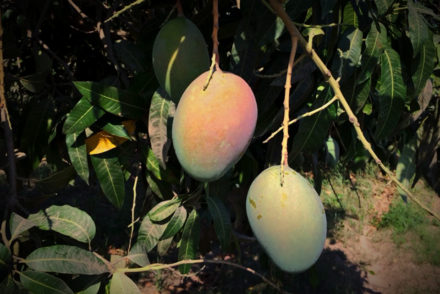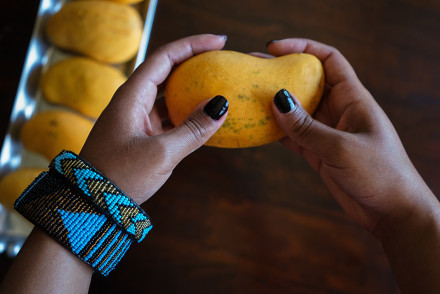2022 Mexican mango crop forecast seems to looking sweet
(Click here to read my offshore crop update)
Predictions for the new year rain down hard during this time of year. Experts and non-experts alike – not to mention annoying influencers – are all giving us their hot takes on the year ahead. Like clockwork, each year at this time, food, weather, clothes, politics, marketing trends, astrological prophesies and more are prognosticated upon.
In our particular industry, we are often bombarded with articles and trend predictions that ruminate on the next big it fruit or vegetable. Countless marketing newsletters flood our inboxes with opinions on whether the plant-based EVERYTHING fad is here to stay, on whether potato milk be the new oat milk, and on what item will replace mushrooms as the hippest health trend in produce?
I don’t know most of the answers to these silly questions, but I doubt that the Whole Foods Biggest Food Trends for 2022 will ring true for most of the country. I say this not because I think these predictions are inaccurate or that I dislike the items. Rather, as someone currently residing in southern Missouri, I simply think they are only indicative of micro sectors of the marketplace rather than overall. Where I live, not one of the trend items on their list is even partially accessible to me. The business most of us of are in is not micro. It’s large-scale and countrywide, and although the micro trends are fun, I’d like to use my mango expertise to offer something more, real mango farmer predictions for the Mexican mango season.
In the end, we are all here to sell something. To do that, we need clear and accurate information. Truth is: most humans are really bad at predicting the future. What we can do is string together as many facts and figures as possible from the people that are closest to the action on the ground and try to make sense of it. It still baffles me that our industry doesn’t do more of this, providing detailed crop reports that are real and useful. Not even the fancy commodity marketing boards do it.
Farmers are generally better at predicting than marketers, and they tend to be less manipulative in their delivery of the information. Technically, farmers have been in the predictions game longer than anyone else. Predictions are rooted back in weather folklore, tied to agriculture. A farmer has always had to be realistic about predictions. In my experience, they tend to be less biased than all the other predictors out there, knowing that despite all the variables in farming and other advantages they may have, they are always at the mercy of weather. As we know, weather is some of the least predictable stuff there is.
Unlike the trend reports that come just for the holidays, farmers are constantly watching, assessing, and adjusting their predications based on what is actually happening, continuously changing their predications with real on the ground happenings. That is what I do here Under The Mango Tree. I use Crespo’s countless connections along all points of the supply chain, from mango tree to mango eater, to bring you the truest and most practical information on all things Mexican, organic and generally mango. This is the kind of information that can help us all build and sell successful organic mango programs.
Mexican Mango Season Prediction
This year, our New Year’s scoop is exceptionally sweet. We expect voluminous, healthy, and large-sized crops for both Ataulfo and Tommy Atkins mangoes from the southern producing regions, which produce from mid-January through mid-April. This is a Mexican mango-wide prediction based on the observations of real Mexican boots-on-the-ground farmers across the regions.
The Crespo Organic mango program has greater amounts of organic production available from the season onset than in years past due to our diligence in planting and converting more certified organic orchards in the regions. For many years, the onset part of the Mexican season has been a hole in large-scale organic mango programs. Since the construction our own packhouse in Chiapas three years ago, Empaque Don Jorge II, we’ve managed to bridge this gap for our customers. This year in particular we are in a strong position.
The Scoop
The southern Chiapas and Oaxaca regions are the first of many mango producing regions that span the entire Pacific rim of Mexico and finish in the northern Los Mochis area, generally in late September. We expect ample volumes from the get-go, Ataulfo mangoes first followed by an early arrival of Tommy Atkins approximately 10-12 days behind.
The south is the most difficult logistically due to its wild terrain and sheer number of miles along the mango pipeline. Distribution takes time from this region, in particular at the onset which can often feel empty, especially if Peruvian fruit is scarce. Organics in the south tend to be limited because only a handful of producers like us have any significant organic production.
The Timing
After the first of the year, we will be in a much better position to pinpoint the packhouse’s season opening dates and our first harvest dates. These dates depend on weather and the maturity (brix) of the fruit.
We currently expect our Chiapas packhouse to open first and start picking Ataulfo mangoes around the 20th-25th of January. That means a February 3-4th FOB Nogales or McAllen sales date. It takes 3-4 days to harvest, 3 days to pack and cool, and 5-7 days to drive the goods from the south to our border warehouses (basically, just in the nick of time to reap the benefits of Super Bowl sales). We will ship to both Nogales and McAllen continuously from the opening of the packhouse.
Some conventional packhouses in the south will open a week or even two earlier than this. Many shippers start too early and pick and ship fruit that is too green. Our Ataulfo program is too important and the season is too long for us to compromise our quality specs just to make earlier sales. A bitter, green Ataulfo in the hands of a new mango eater will deter them from purchasing more.
Cooperative Weather
The main reason we can report these advantageous predictions for the upcoming Mexican mango season is due to the cooperative weather the south has been having. It’s too early to tell if the weather will be as cooperative to the northern regions, but, in the south, we can report optimal conditions so far while cautiously reminding you that this can change with any blip in the weather.
It has been an incredibly rainy year with perfect amounts of rain at the most favorable times in mango production. The rains came heavy and then stopped just as the blooms started. Cold nights ensued, which blooms love. The usual winds and cold rain, which are common in the region at this time of year and which blow off both blooms and bloom set, has so far not occurred.
This means that the usual beginning of the season fruit gaps we are accustomed to will most likely not occur. Again, barring wind in particular, we expect fruit to flow voluminously and continuously from the onset. The fruit should be big and juicy. All conditions point to incredible tasting fruit. My personal preference when it comes to Mexican mangoes is the southern fruit, so I am a bit excited to taste this season’s fruit.
Packhouse & Logistics Advantages
We have invested significantly in upgrades and improvements in our Chiapas packhouse, EDJ II over the past several years. We can efficiently pack more volume and more SKU’s, achieving better quality.
El Grupo Crespo has also increased organic orchard volume rapidly over the past few years with plantings, mango orchard purchases, and certified organic conversions. We currently produce over 250 hectares of organic fruit in Chiapas and another 270 in Oaxaca. Our long-term partnership with an Oaxacan packhouse contributes another 1000 hectares of organic fruit to the mix.
Logistically, things are complicated due to the distance of the southern regions, but we have increased truck volumes and made a number of significant new and long-term partnerships with reliable transportation lines. We have dependable logistics from the south to our border facilities in Nogales and McAllen. The US logistics is another story.
Omicron & COVID
In regards to our packhouse labor and COVID, we continue to operate with strict health and safety protocols in place. These were established during COVID’s infancy and have evolved alongside updated heath regulations and advice. We hope our remote southern locations, with very little coming in and out, slow the spread of Omicron a bit as it has with the other variants. This is now our third season with a new variant and, with strict COVID protocols in place, we feel as positive as possible.
The Program Advancements & Opportunities
This is our 7th season as a Direct Trade brand. Not only are we currently equipped to handle all volume needs, of all sizes, of over 8 different varietals in several SKU’s including the Crespo Big Box Bulk Pack, Retail Bags, Consumer Cases and a new dried mango line, we can also help grow your mango programs with our mango expertise.
Our family-owned USA warehouse in Nogales and McAllen, with multi-week transfers and deliveries to Los Angeles and Philadelphia, offers 6 day a week service with quick in-and-out.
We are easy to deal with and consistent in what we do. That coupled with healthy, yielding orchards make my predictions of a great Mexican mango season super feasible.













No Comments